#pulp art 1934
Explore tagged Tumblr posts
Text
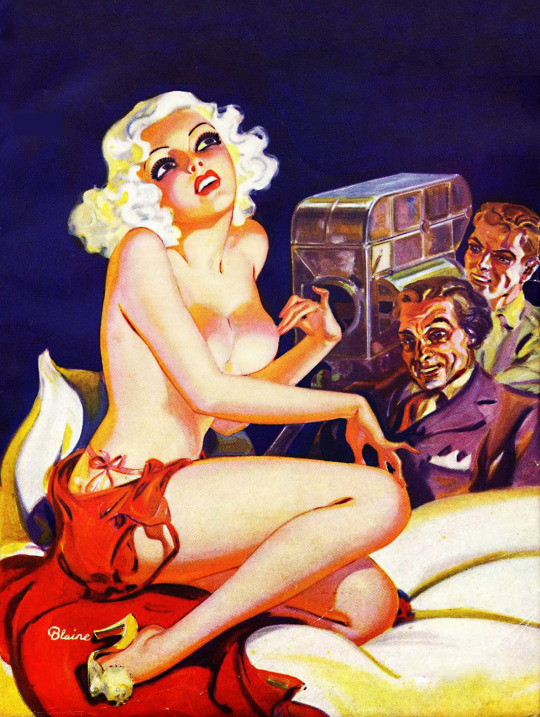
Saucy Movie Tales Dec 1935
Blaine = Norman Saunders
#golden age art#pulp magazine art#pulp art#pulp art 1934#Saucy Movie Tales#Norman Saunders art#byronrimbaud
7 notes
·
View notes
Text

Vintage Pulp - Film Fun (Sept1934)
Art by Enoch Bolles
Dell Publications
#Pulp#Magazines#Film Fun#Enoch Bolles#GGA#Good Girl Art#Cheesecake#Vintage#Art#Illustration#CGC#Film#Dell Publications#Dell#1934#1930s#30s
102 notes
·
View notes
Text
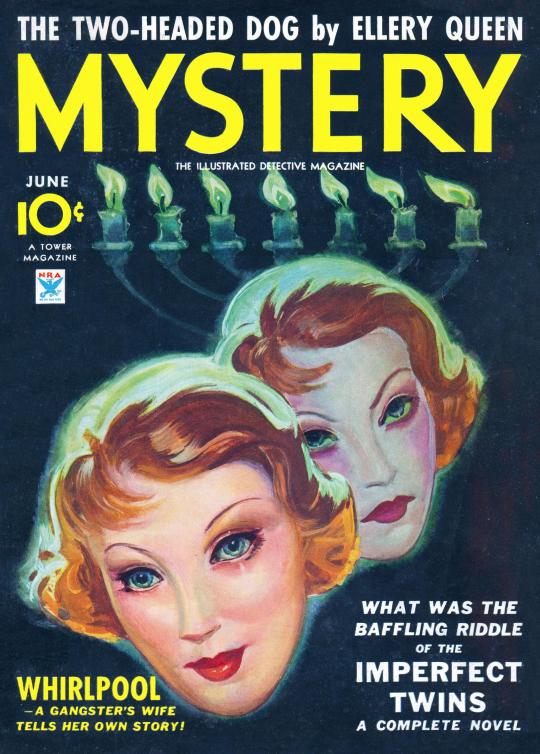
Mystery, June 1934 Cover by Charles De Feo
58 notes
·
View notes
Text
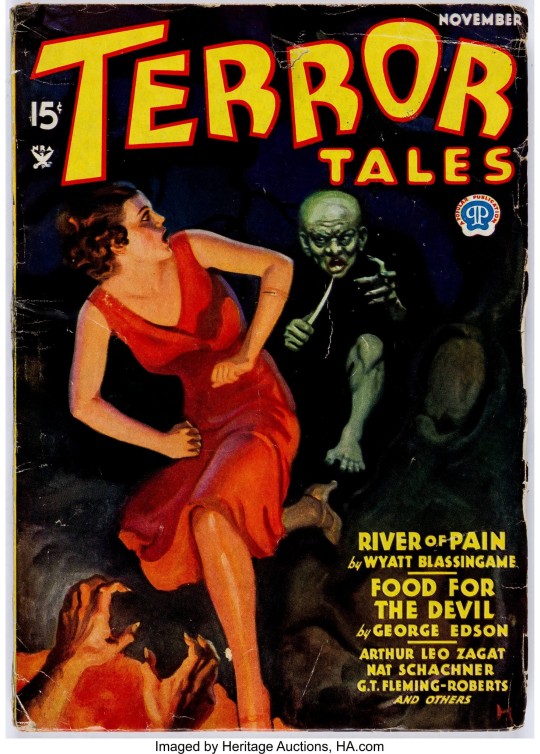
Vintage Pulp - Terror Tales (Nov1934) (Popular Publications)
#Pulp#Terror Tales#Horror#Arthur Leo Zagat#GT Fleming-Roberts#Vintage#Art#Pulp Art#Pulp Illustration#Popular Publications#Popular#1934#1930s#30s
14 notes
·
View notes
Text

Douglass Crockwell (1904-1968) “Paper Workers” (1934) Source
Exhibition Label
The paper plant where these men are laboring was the mainstay of Glens Falls, New York, where Douglass Crockwell had his studio. Crockwell, like many artists on the Public Works of Art Project who anticipated the public exhibition of his painting, proudly depicted the chief industry of his town. The workers are smoothing and stamping an enormous roll of newsprint, the plant’s principal product.
Crockwell noted that in this scene dominated by mighty iron machinery he took "some liberties with the human form" because "the whole composition of the picture requires hard structural forms." By showing the workers as blocky figures that appear to be roughly carved out of wood, the artist visually likened the men to the source of the wood pulp from which they made newsprint. The workers appear powerfully identified with their work. The question "what do you do for a living?" became a poignant one during this time when so many had no answer. Crockwell, a busy illustrator for much of his life, recalled that when "the depression arrived . . . there wasn’t much work."
31 notes
·
View notes
Text

John Coughlin (American, 1885-1943, illustrator for pulp magazines beginning in 1913) - 1940

Rudolf Sieber-Lonati (Austrian, 1924-1990) - cover art for Macabros #4

Dirk Bouts (Netherlands, 1415-1475)
Hell (detail) - Palais des Beaux Arts, Lille, France - 1450

Edmund Dulac (French/British, 1882-1953)
Bashtchelik - from Fairy Book - 1916

Harold W. McCauley (American, 1913-1977)
Priestess of the Floating Skull - Amazing Stories - May 1943

unknown illustrator - Arthur B. Reeve - Pandora - first edition dust cover - New York Harper and Brothers - 1926

unknown illustrator - Sharyn McCrumb - Zombies of the Gene Pool

unknown illustrator - Fredric Brown - The Dead Ringer


Edward Gorey (American, 1925-2000)
from THE DISRESPECTFUL SUMMONS - The Fantod Press - 1973

Roa - street artist in Oaxaca

Darrell K Sweet (American, 1934-2011) – cover for Inherit The Stars
#art by others#other's artwork#painting#drawing#Darrell K Sweet#Edward Gorey#Dirk Bouts#Rudolf Sieber-Lonati#Roa#Harold W. McCauley#John Coughlin#Edmund Dulac
14 notes
·
View notes
Text
Advice on writing from writers
1.
I can only say that I kept reading and reading and your book never fucking began. You just kept telling the reader how extraordinary your leading character was. You obviously have talent, but what is the good of it if most of your readers (as I suspect) will either read you uncomfortably or stop altogether. This won’t be because they are not necessarily up to the mark but because of the glittering vanity with which you put your sentences together. I would never tell you that you don’t have talent. You are in a peculiar position of having too much felicity with words and, therefore, do not seem ready as yet, to get into the hard and often dreary literary mechanics of writing novels and editing them. These are harsh words, but you are bright enough and I would like to encourage you to take the art of novel writing more seriously than your enjoyment of yourself.
Norman Mailer Letter to John Kriegsman 21st July 2006
(Source: Selected Letters of Norman Mailer, edited by J. Michael Lennon
2.
Your vivid, exciting companionship in the office must not be your audience, you must find your own quiet centre of life, and write from that to the world that holds offices, and all society, all Bohemia; the city, the country—in short, you must write to the human heart, the great consciousness that all humanity goes to make up. Otherwise what might be strength in a writer is only crudeness, and what might be insight is only observation; sentiment falls to sentimentality—you can write about life, but never write life itself. And to write and work on this level, we must live on it—we must at least recognize it and defer to it at every step. We must be ourselves, but we must be our best selves.
Sarah Orne Jewett Letter to Willa Cather 13th December 1908
(Source: The Selected Letters of Willa Cather, edited by Andrew Jewell)
3.
A long time ago when I was writing for pulps I put into a story a line like “he got out of the car and walked across the sun-drenched sidewalk until the shadow of the awning over the entrance fell across his face like the touch of cool water.” They took it out when they published the story. Their readers didn’t appreciate this sort of thing: just held up the action. And I set out to prove them wrong. My theory was that they just thought they cared nothing about anything but the action; that really, although they didn’t know it, they cared very little about the action. The things they really cared about, and that I cared about, were the creation of emotion through dialog and description; the things they remembered, that haunted them, were not for example that a man got killed, but that in the moment of his death he was trying to pick a paper clip up off the polished surface of a desk, and it kept slipping away from him, so that there was a look of strain on his face and his mouth was half open in a kind of tormented grin, and the last thing in the world he thought about was death. He didn't even hear death knock on the door. That damn little paper clip kept slipping away from his fingers and he just couldn't push it to the edge of the desk and catch it as it fell.
Raymond Chandler Letter to Frederick Lewis Allen 7th May 1948
(Source: Selected Letters of Raymond Chandler, edited by Frank McShane)
4.
For Christ sake write and don’t worry about what the boys will say nor whether it will be a masterpiece nor what. I write one page of masterpiece to ninety one pages of shit. I try to put the shit in the wastebasket.
Ernest Hemingway Letter to F. Scott Fitzgerald 28th May 1934
(Source: Ernest Hemingway: Selected Letters 1917-1961, edited by Carlos Baker)
5.
For a writer, a feeling for words—for language—must be the principal thing—the central endowment. Without such a feeling it is useless to apply oneself to the hard, hard tasks which face the writer, throughout his or her career. You have this feeling for language, but you have not developed it very far. For you do not write, as we say, “in form.” You write free verse. At seventeen, if you are to go on writing poetry, you must not only begin to acquaint yourself with the effects of formal verse, but you must begin to use these effects. You can begin by imitating this poet or that as long as you admit that you are imitating. You must begin to practise—as a pianist practises (only you are practising creatively, of course-not merely performing). You show a slight tendency toward form, in these poems of your manuscript, but not consistently. I should say, from present evidence, that you might very well turn out to be a writer of prose—a novelist, say, if you have any storytelling ability.
So try writing all sorts of things! And look into some textbooks on prosody. Poetry Handbook, by Babette Deutsch (Funk and Wagnall) is a valuable, recent such book, that has received high praise from many people, including myself. Any book store will order it for you.
Write and read! Read and write! Those are the two rules.
Louise Bogan Letter to an aspiring poet 6th April 1984
(Source: What the Woman Lived: Selected Letters of Louise Bogan, 1920-1970, edited by Ruth Limmer)
6.
Never use jargon words like reconceptualize, demassification, attitudinally, judgmentally. They are hallmarks of a pretentious ass.
David Ogilvy Memo to his colleagues 17th September 1982
(Source: The Unpublished David Ogilvy, edited by Joel Raphaelson)
7.
Nobody ever became a writer just by wanting to be one. If you have anything to say, anything you feel nobody has ever said before, you have got to feel it so desperately that you will find some way to say it that nobody has ever found before, so that the thing you have to say and the way of saying it blend as one matter—as indissolubly as if they were conceived together.
Let me preach again for one moment: I mean that what you have felt and thought will by itself invent a new style so that when people talk about style they are always a little astonished at the newness of it, because they think that is only style that they are talking about, when what they are talking about is the attempt to express a new idea with such force that it will have the originality of the thought.
F. Scott Fitzgerald Letter to his daughter 20th October 1936
(Source: A Life in Letters, edited by Matthew J. Bruccoli)
8.
You describe a sweet place, but your descriptions are often more minute than will be liked. You give too many particulars of right hand and left.
Jane Austen Letter to her niece 9th September 1814
(Source: Jane Austen’s Letters, edited by Dierdre Le Faye)
9.
There is no trick to it. If you like to write and want to write, you write, no matter where you are or what else you are doing or whether anyone pays any heed. I must have written half a million words (mostly in my journal) before I had anything published, save for a couple of short items in St. Nicholas. If you want to write about feelings, about the end of summer, about growing, write about it. A great deal of writing is not “plotted”—most of my essays have no plot structure, they are a ramble in the woods, or a ramble in the basement of my mind. You ask, “Who cares?” Everybody cares. You say, “It’s been written before.” Everything has been written before.
E. B. White Letter to Miss R. 15th September 1973
(Source: Letters of E. B. White, edited by Dorothy Lobrano Guth)
10.
When authors write best, or, at least, when they write most fluently, an influence seems to waken in them which becomes their master—which will have its way —putting out of view all behests but its own, dictating certain words, and insisting on their being used, whether vehement or measured in their nature, new moulding characters, giving unthought of turns to incidents, rejecting carefully elaborated old ideas, and suddenly creating and adopting new ones.
Charlotte Brontë Letter to George Henry Lewes 12th January 1848
(Source: The Brontës: Life and Letters, edited by Clement Shorter)
11.
1. Abandon the idea that you are ever going to finish. Lose track of the 400 pages and write just one page for each day, it helps. Then when it gets finished, you are always surprised.
2. Write freely and as rapidly as possible and throw the whole thing on paper. Never correct or rewrite until the whole thing is down. Rewrite in process is usually found to be an excuse for not going on. It also interferes with flow and rhythm which can only come from a kind of unconscious association with the material.
3. Forget your generalized audience. In the first place, the nameless, faceless audience will scare you to death and in the second place, unlike the theatre, it doesn't exist. In writing, your audience is one single reader. I have found that sometimes it helps to pick out one person—a real person you know, or an imagined person and write to that one.
4. If a scene or a section gets the better of you and you still think you want it—bypass it and go on. When you have finished the whole you can come back to it and then you may find that the reason it gave trouble is because it didn't belong there.
5. Beware of a scene that becomes too dear to you, dearer than the rest. It will usually be found that it is out of drawing.
6. If you are using dialogue—say it aloud as you write it. Only then will it have the sound of speech.
John Steinbeck Letter to Robert Wallsten 14th February 1962
(Source: Steinbeck: A Life in Letters, edited by Elaine Steinbeck and Robert Wallsten)
12.
Keep writing and profit by criticism. Mind grammar, spelling, and punctuation, use short words, and express as briefly as you can your meaning. Young people use too many adjectives and try to “write fine.” The strongest, simplest words are best, and no foreign ones if it can be helped.
Write, and print if you can; if not, still write, and improve as you go on. Read the best books, and they will improve your style. See and hear good speakers and wise people, and learn of them. Work for twenty years, and then you may some day find that you have a style and place of your own, and can command good pay for the same things no one would take when you were unknown.
Louisa May Alcott Letter to Mr. J. P. True 24th October (year unknown)
(Source: Louisa May Alcott: Her life, letters, and journals, edited by Edna D. Cheney)
13.
1. Always try to use the language so as to make quite clear what you mean and make sure your sentence couldn’t mean anything else.
2. Always prefer the plain direct word to the long, vague one. Don’t implement promises, but keep them.
3. Never use abstract nouns when concrete ones will do. If you mean “More people died” don’t say “Mortality rose.”
4. In writing. Don’t use adjectives which merely tell us how you want us to feel about the thing you are describing. I mean, instead of telling us a thing was “terrible,” describe it so that we’ll be terrified. Don’t say it was “delightful”; make us say “delightful” when we’ve read the description. You see, all those words (horrifying, wonderful, hideous, exquisite) are only like saying to your readers, “Please will you do my job for me.”
5. Don’t use words too big for the subject. Don’t say “infinitely” when you mean “very”; otherwise you’ll have no word left when you want to talk about something really infinite.
C. S. Lewis Letter to Joan 26th June 1956
(Source: Letters of C. S. Lewis, edited by W. H. Lewis)
14.
Do be careful of your adjectives – do try and be terse, there is so much more force in a rapid style that will not be hampered by superfluous details. Just look at your piece and see how many three lined sentences could be comfortably expressed in one line. . . try to be terse and in some way original – the world abounds with new similes and metaphors.
D. H. Lawrence Letter to Louise Burrows September 1906
Source: The Letters of D. H. Lawrence, Vol.1, edited by James T. Boulton)
15.
[F]rom its exposition through its agon, to its unravelling a plot should be a living organism, and its central intelligence, the voice which manipulates and dialectically arouses, fulfils and frustrates my expectations, and which ultimately rewards me with a perception into the meaning of all the sound and fury that makes up a story, is one into whose hands I have surrendered my own intelligence, imagination, and sense of life. And when that central intelligence assumes such responsibility and authority but fails to deliver, he violates my trust and embarrasses the author for whom he acts as surrogate.
Ralph Ellison Letter to Horace Porter 29th February 1986 (Source: The Selected Letters of Ralph Ellison, edited by John F. Callahan & Marc Conner)
16.
Here’s an assignment for tonight, and I hope Ms. Lockwood will flunk you if you don’t do it: Write a six line poem, about anything, but rhymed. No fair tennis without a net. Make it as good as you possibly can. But don’t tell anybody what you’re doing. Don’t show it or recite it to anybody, not even your girlfriend or parents or whatever, or Ms. Lockwood. OK?
Tear it up into teeny-weeny pieces, and discard them into widely separated trash receptacles. You will find that you have already been gloriously rewarded for your poem. You have experienced becoming, learned a lot more about what’s inside you, and you have made your soul grow.
Kurt Vonnegut Letter to the students of Xavier High School 5th November 2006
(Source: More Letters of Note)
BONUS
This sentence has five words. Here are five more words. Five-word sentences are fine. But several together become monotonous. Listen to what is happening. The writing is getting boring. The sound of it drones. It’s like a stuck record. The ear demands some variety.
Now listen. I vary the sentence length, and I create music. Music. The writing sings. It has a pleasant rhythm, a lilt, a harmony. I use short sentences. And I use sentences of medium length. And sometimes, when I am certain the reader is rested, I will engage him with a sentence of considerable length, a sentence that burns with energy and builds with all the impetus of a crescendo, the roll of the drums, the crash of the cymbals—sounds that say listen to this, it is important.
Gary Provost 100 Ways to Improve Your Writing 1985
(Source)
4 notes
·
View notes
Text
Sky Heroes and Villains: The Story of Battle Birds
The Rise and Fall of Battle Birds
Battle Birds was a pioneering American pulp magazine focusing on air warfare. Launched by Popular Publications at the end of 1932, it initially catered to aviation enthusiasts with its thrilling tales of aerial combat. The magazine’s early success was part of a broader trend spurred by Charles Lindbergh's historic transatlantic flight, which ignited public fascination with aviation.

In 1934, facing sluggish sales, the magazine underwent a major transformation. It was rebranded as Dusty Ayres and His Battle Birds, with Robert Sidney Bowen taking over as the lead writer. Bowen, an established pulp author, introduced a futuristic twist to the magazine’s narrative. Set in a future where the United States battles a menacing Asian empire known as the Black Invaders, the series featured the heroic pilot Dusty Ayres and his trusty squadron as they defended the nation against formidable foes.
The Dusty Ayres Era
The relaunch brought a fresh approach to the pulp genre. Bowen's stories, marked by their unique setting and imaginative plots, included a memorable villain, Fire Eyes, who wore a distinctive green mask emitting sparks of fire. Despite the innovation, the magazine's revised format did not sustain its readership, leading to its cessation after a brief but eventful run. The final novel, an unusual move for pulp fiction, saw Ayres triumph over the Black Invaders, wrapping up the series on a conclusive note.

Dusty Ayres and His Battle Birds was well-received but struggled with limited appeal, causing it to fold after just over a year. Pulp historians offer varied explanations: some attribute the magazine’s end to its constrained setting, while others point to disappointing sales figures. Notably, the magazine featured a letter column and a design competition called "Planes of Tomorrow," showcasing its innovative spirit.
Revival and Artistic Legacy
In 1940, Battle Birds was revived under its original title. This second iteration ran until 1944, continuing the legacy of air-war fiction. During both its runs, the magazine's covers were crafted by Frederick Blakeslee, renowned for his accurate and dynamic depictions of aircraft. Blakeslee’s artwork not only captured the excitement of aerial battles but also offered a glimpse into future aviation, particularly notable in the wartime covers that reflected real-world events.
Publication Details
The magazine’s publication history reflects its shifting focus and popularity. Initially a monthly, Battle Birds was published from December 1932 to July 1934. After the rebranding to Dusty Ayres, it continued monthly until August 1935, with the final issues transitioning to a bimonthly schedule. After a hiatus, the magazine returned as Battle Birds in February 1940, running bimonthly until its final issue in May 1944. Over the years, it saw changes in format and pricing, but its commitment to exciting air-war narratives remained a constant.
In Summary
Battle Birds and its alter ego, Dusty Ayres and His Battle Birds, left an indelible mark on the pulp genre with their imaginative stories and striking cover art. The magazine’s evolution reflects the dynamic nature of pulp fiction and its ability to capture the zeitgeist of its era. Whether through futuristic battles or historical reflections, Battle Birds remains a fascinating chapter in the annals of pulp magazine history
0 notes
Text
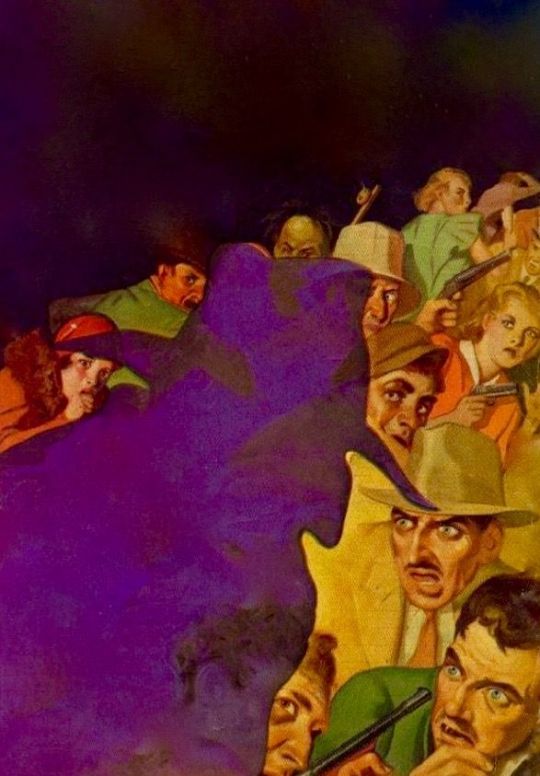
The Shadow Magazine Oct 15 1934
George Rozen
#golden age art#pulp magazine art#pulp art#pulp art 1934#The Shadow Magazine#George Rozen art#byronrimbaud
5 notes
·
View notes
Text

Vintage Pulp - New Western Magazine (Nov1934)
Art by Curtis Delano
Popular Publications
#Pulp#New Western Magazine#Westerns#Curtis Delano#Magazines#Vintage#Art#Illustration#Pulp Art#Pulp Illustration#Popular Publications#Cowboys#1934#1930s#30s
47 notes
·
View notes
Text

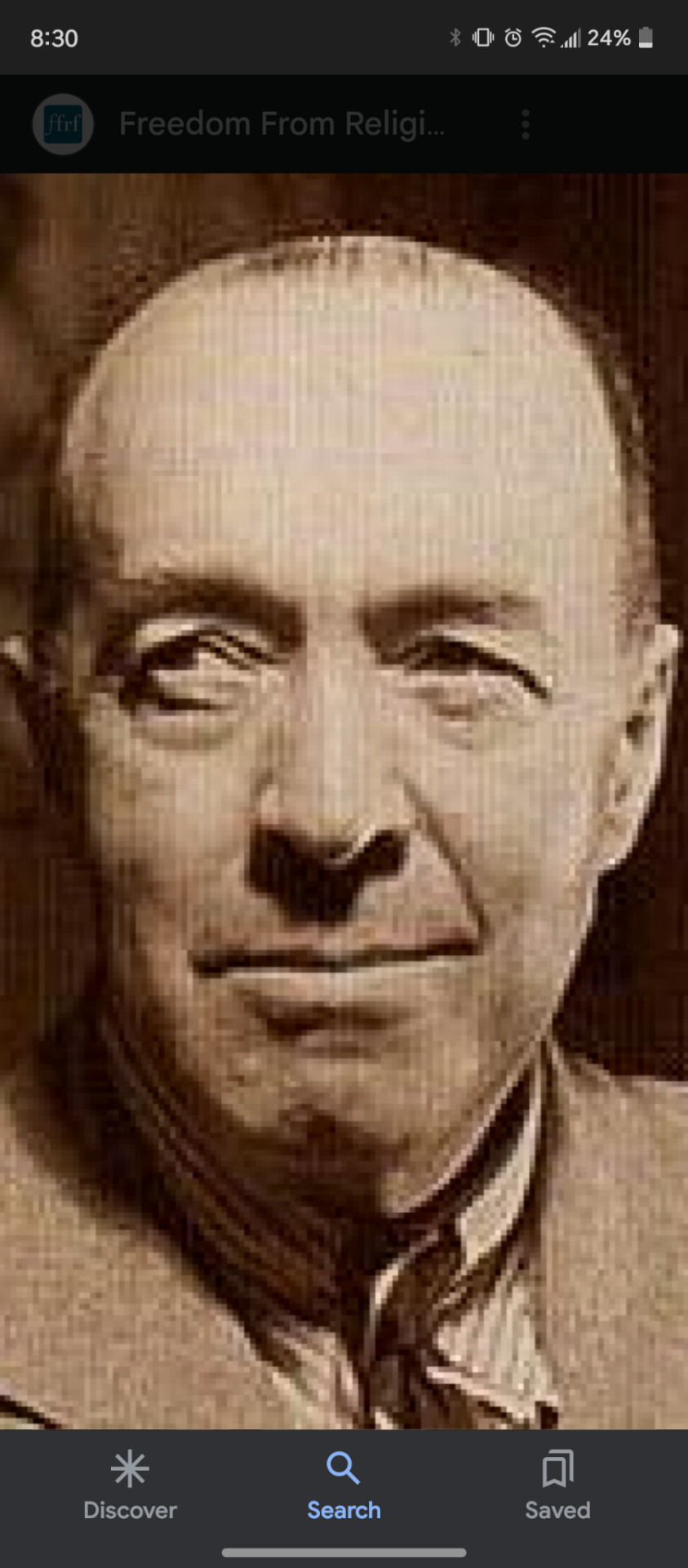

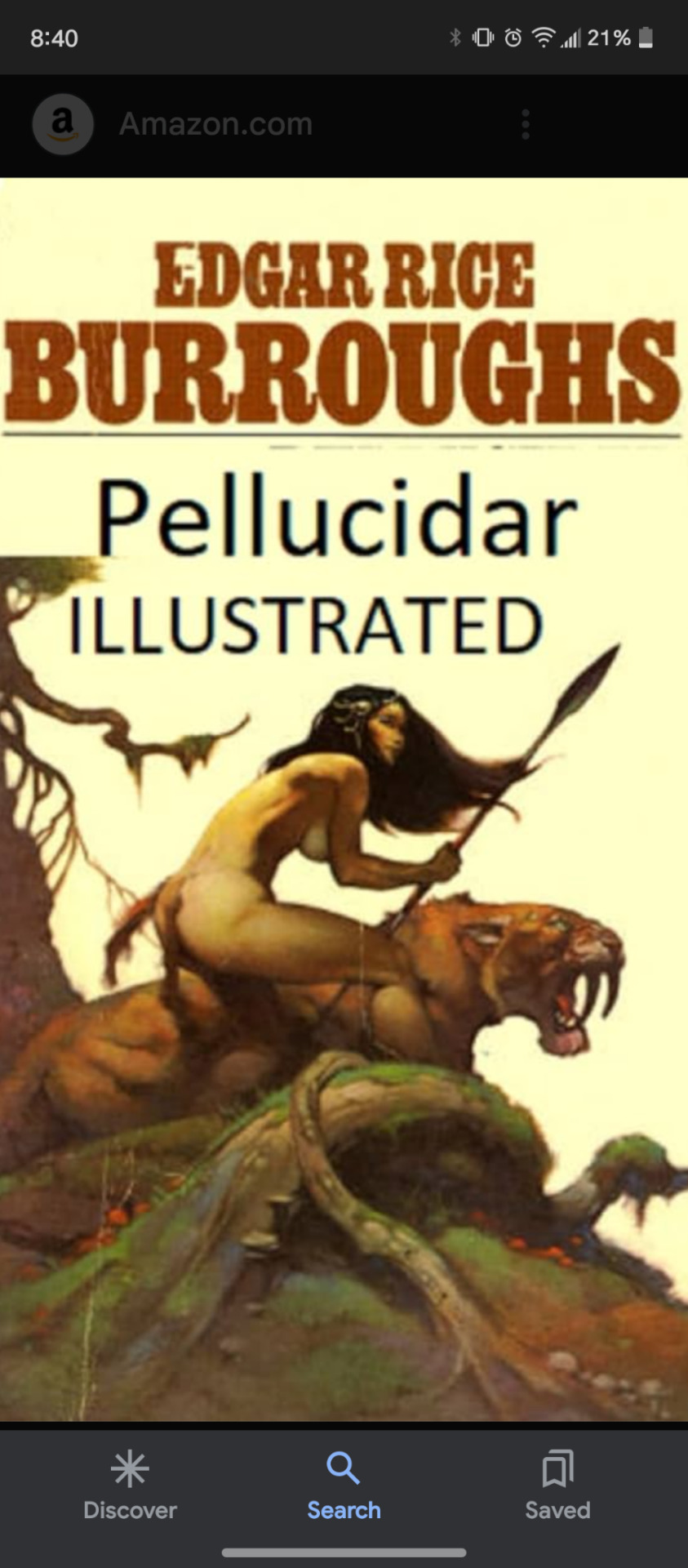

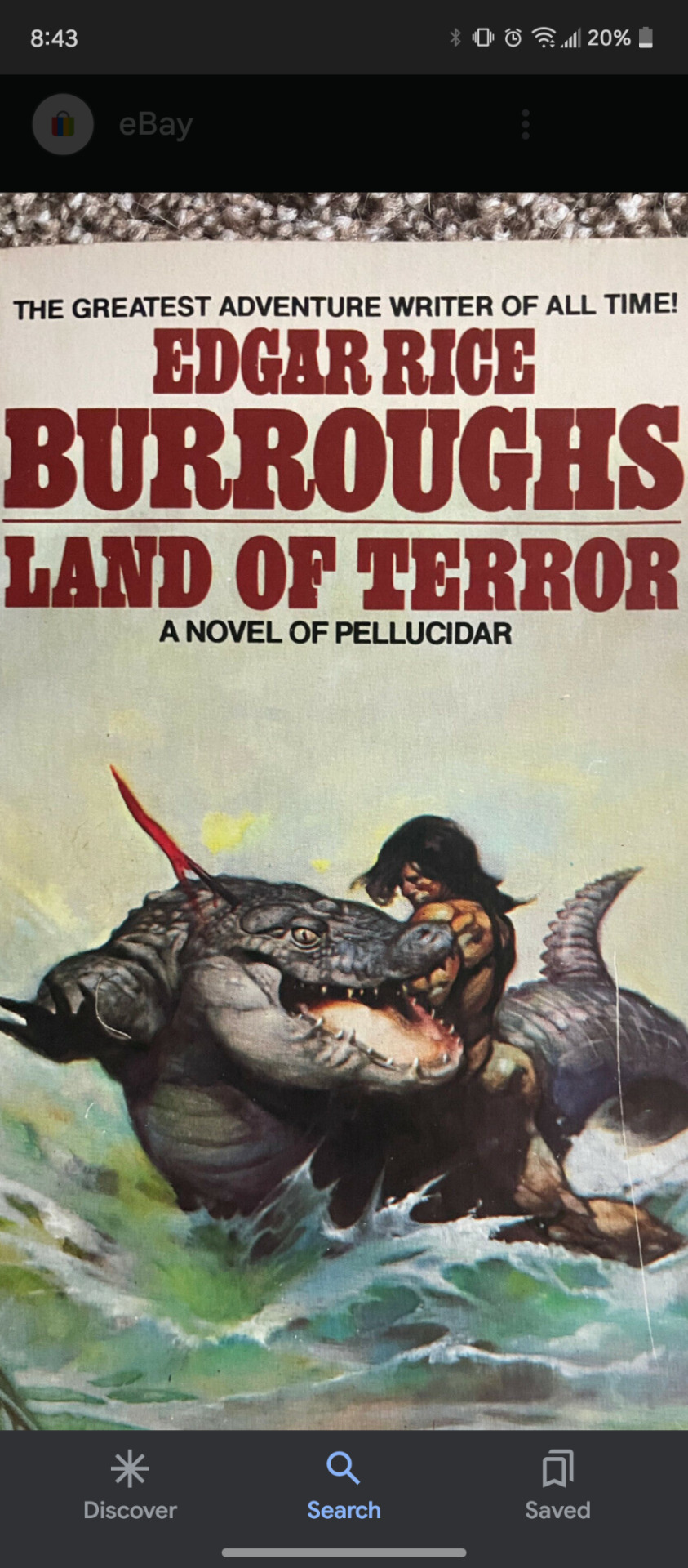
Pics:
1 & 2. Photos of Edgar Rice Burroughs the creator of Tarzan, John Carter & so many other heroes, villains & vivid settings...
3. Map of the Inner World of Pellucidar. The name that comes from the word pellucid, for something that's "transparently clear" - as befits a 'place' under continual 'sun' light.
4. Cover for a special edition of the novel "Pellucidar." Back when artists helped you view the story in your mind!
5 & 6. Covers for 2 of the books in this 7 novel series & of interest to us...
1906: The Earth (is) Not Hollow.
Edgar R. Burroughs was an American writer who's best known for his hero Tarzan. He had a prolific output in the sci-fi, fantasy & adventure genres.
Burroughs' works sold 30 million copies during his lifetime! And, he was an early pioneer of the crossover event - having Tarzan visit his fantasy series, "Pellucidar".
Plots: These 7 Hollow Earth novels begin with a giant mechanical driller taking our heroes underground - to look for mineral deposits.
Instead, the "Iron Mole" discovers an Inner World some 500 miles below the Earth's crust!
A place lit up by a the molten core acting like a tiny 'sun.' So, there's no 'measurable' time there - it's always 'now'...
Stranger still, the land curves upward! As if everything's inside of a bowl.
More importantly, it's a place that's inhabited by ancient animals & enslaved humans!!
But, worse, every being in Pellucidar is trying to survive - by killing & eating each other!!
Mahars, winged reptilian overlords - with hypnotic powers, run a slave society & like to snack on people!
The series takes readers across many savage lands & seas - with our heroes battling their way thruout a vast Inner World...
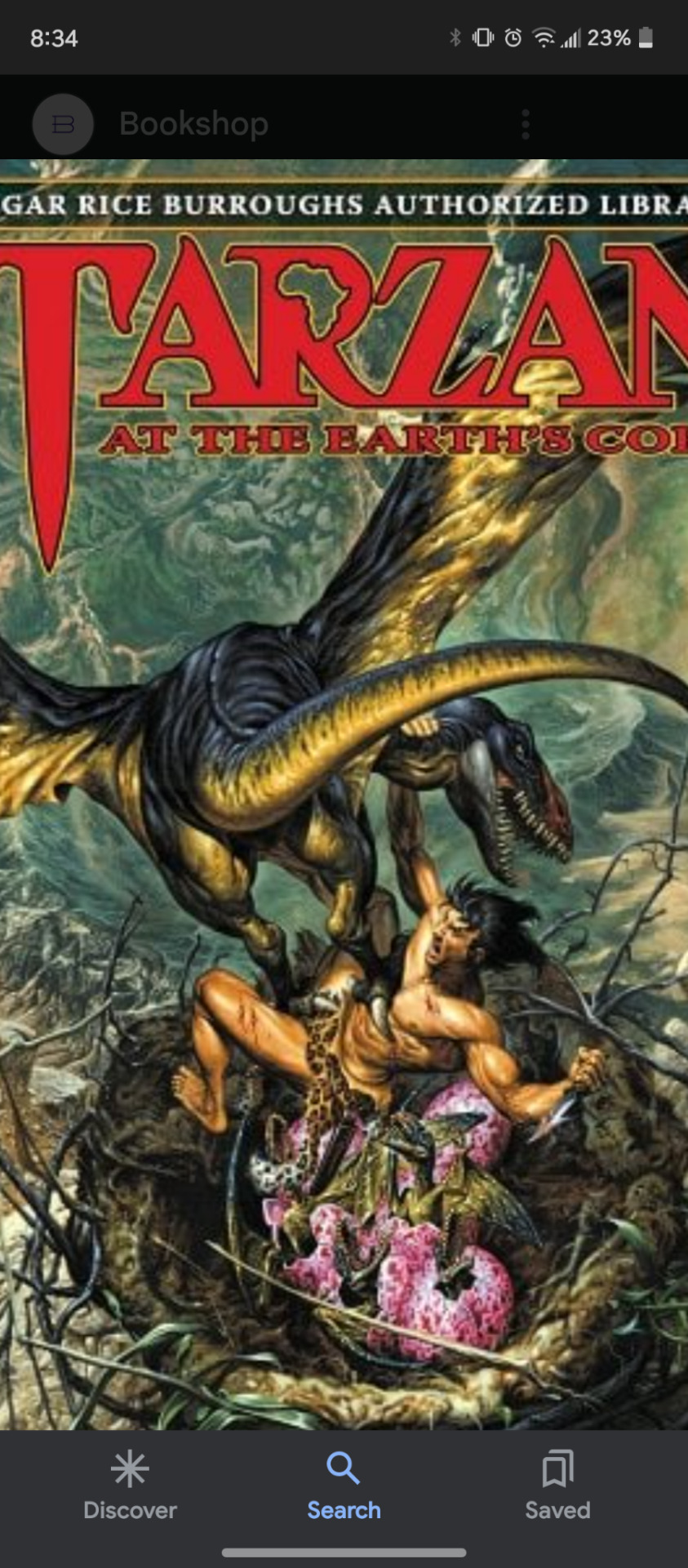
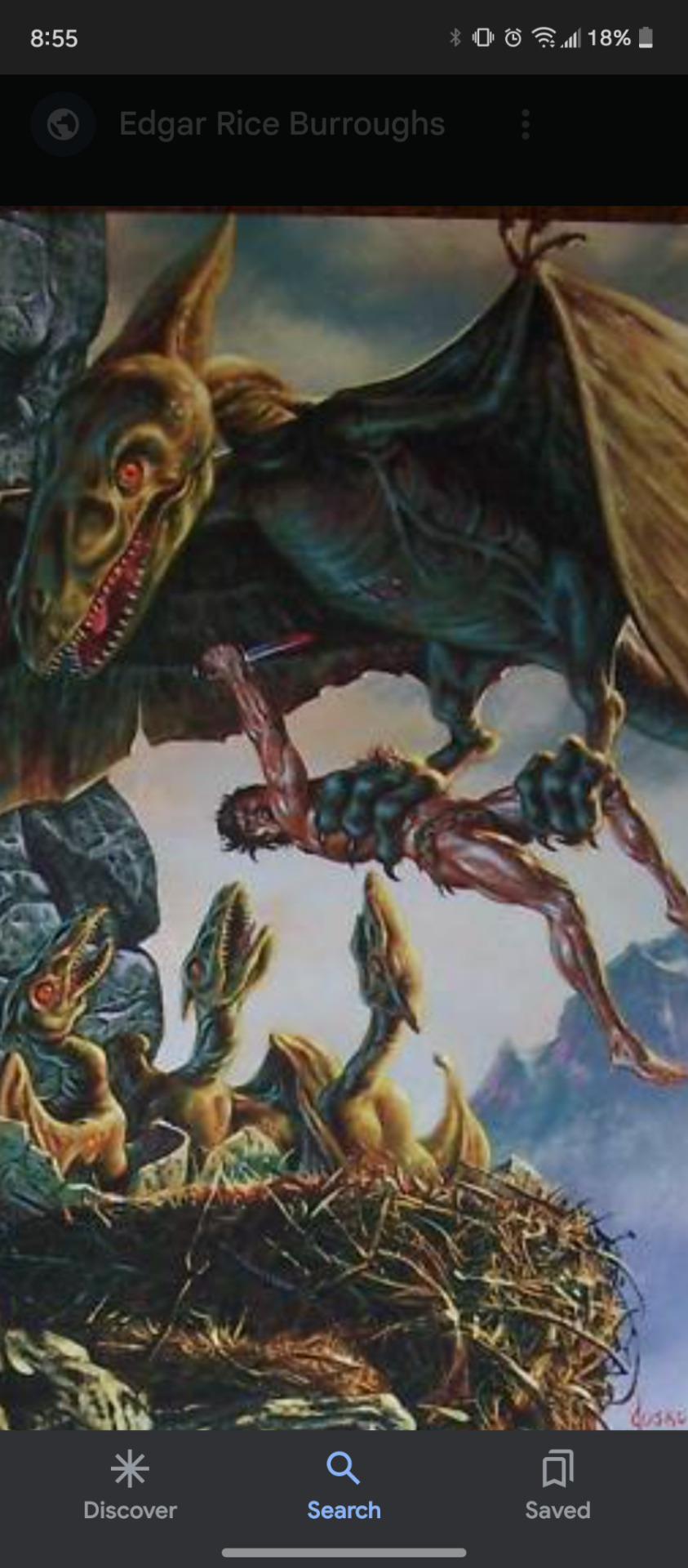

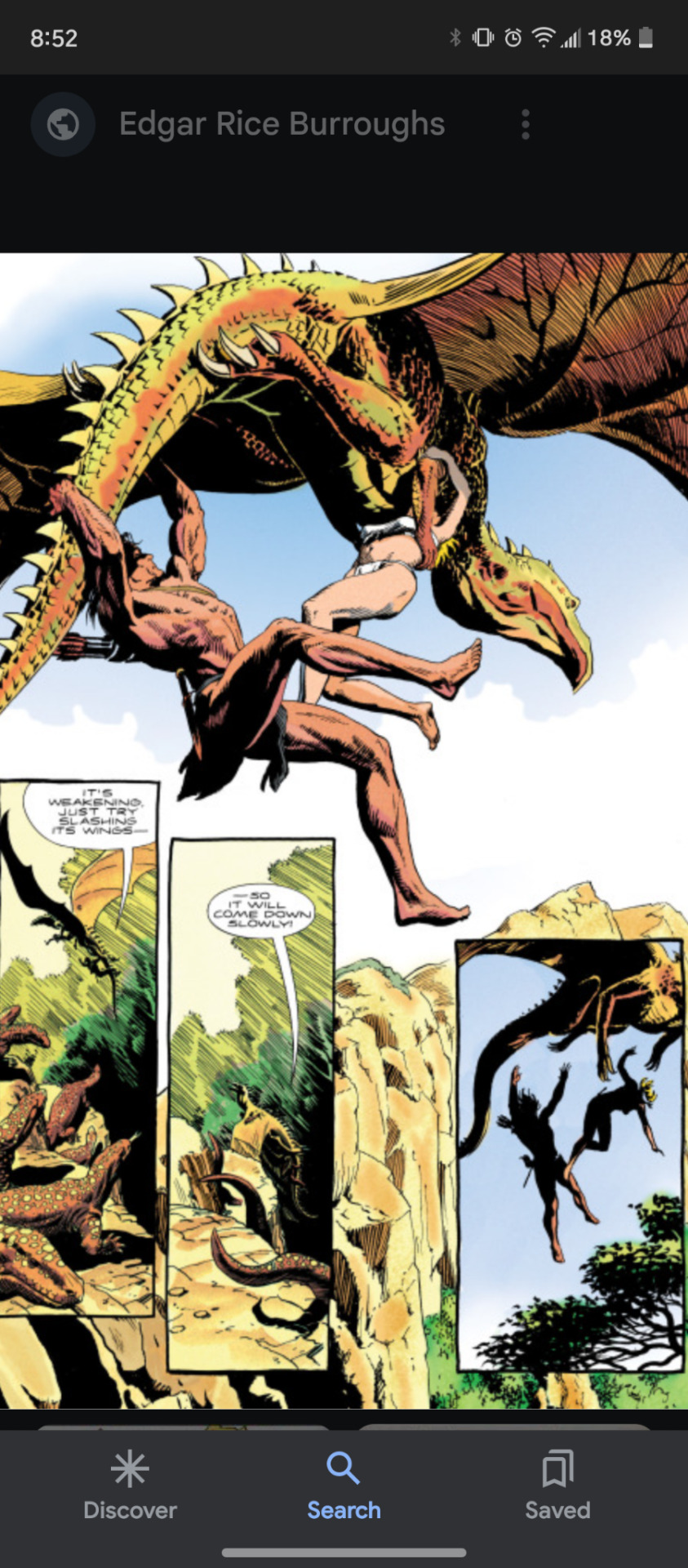
Pics:
1 & 2. Great cover & card art(?) for "Tarzan At the Earth's Core." This was a landmark crossover between 2 of Burroughs' novel series. A rare event in those bygone days.
3 & 4. Inside art from a comic book adaptation - with, it seems, art from the great Thomas Yeates(?)...
Criticisms: Usually, such 'colonial' authors don't fare well with modern readers. Their legacies become tainted due to the writers' white supremacist sympathies.
Figures like: Rudyard Kipling, Joseph Conrad & yes, even Lovecraft, all have repugnant personal ideas behind their works.
The same can be said of Burroughs. He's a man who's famous for creating an African jungle hero. Yet, the writer never visited Africa himself!
Burroughs was actually 'inspired' by the pulps he read as he struggled to sell pencil sharpeners...
ERB, "If (pulp writers) were paid for writing such... rot, I could write stories just as rotten..."
Since then, readers have argued that Burroughs exceeded the low bar he set for himself!
Burroughs was also smart enough to make business brands & franchises out of his works.
The skeptics of the time, chided him for 'diluting' his writings.
They were wrong.
To date, there's been over 50 films made out of his Tarzan character alone!
And, many of his literary inventions have received various types of multi- media adaptation.
According to the NY Times, "Before Tarzan, nobody understood... how marketable a (such a commodity) could be."
Weird Factoid: In 1929, the 1st Tarzan book was removed from the Los Angeles Public Library - supposedly because Tarzan & Jane were "living in sin!"
Then, in 1934, Germany got into the same act!! The Berlin Film Control Board banned all the Tarzan books for being "dangerous to Nazi 'principles' of race... & offensive to Nazi ideals (like) womanly dignity!"
(Why's my sense of irony tingling?!)
Life: Burroughs was a patriotic man who attended the Michigan Military Academy - both, as student & as a geology teacher.
At the beginning of WW1, Burroughs tried to attend West Point, get into 'Teddy' Roosevelt's Rough Riders or wanted to join the Chinese Army - as a mercenary!!
But, he was denied entry to all...
So, Borroughs enlisted in the U.S. Army - & got sent to Arizona! There, he was Captain of the U.S. Reserves & would rise to the rank of Major.
Burroughs also wrote patriotic articles & worked pro-American themes into his short stories & novels.
His military training had instilled the idea of honor between warriors in Burroughs. This morality came to play a role in his heroes' development.
Burroughs also hated Communism. He planned to write a novel of a future where Bolshevism ruled the world - just for the Army!
But, this idea was nixed in the bud.
After the war, this plot germ became his novel "The Moon Maid."
Later in life, Burroughs moved to Hawaii, where he heard the surprise Japanese attack on Pearl Harbor!!
Unable to join the fight, he became the oldest war correspondent in U.S. history...
After WW2, Burroughs suffered from several health problems. He was supposedly reading a comic book when he died - of a heart attack.
0 notes
Text
Zoe Mozert was born Alice Adelaide Moser on April 27, 1907 in Colorado Springs, Colorado. Her father was Fred William Moser, a mechanical engineer of German ancestry. The family name had orignally been Motzar, but that was changed to Moser when her grandfather emigrated to America. Her mother was Jessie Mable Hatfield of Ohio. Her parents married in 1906 and she was their first child.
From 1925 to 1928 she studied at the Philadelphia Museum School of Industrial Art, where she took advanced classes with Thorton Oakley in 1927 and 1928. The future pulp artist, H. J. Ward, was also a student in that same class. She paid for her tuition by modeling at the school. She most likely also posed for H. J. Ward, several of whose paintings from this time period portray a woman with strikingly similar features. She began her career as an artist in 1927, while working for the Pittsburgh Plate Glass Company. She soon began her own window display business.
In 1932 she moved to New York City to look for entry-level freelance work in the magazine industry. Her first illustration jobs were for Bernarr Macfadden's True Story. At this time she adopted a professional name, "Zoe Mozert." According to the artist, "I looked through a name dictionary for a new first name and when there were finally no pages left I settled on Zoe."
In 1933 she won a scholarship in a talent contest to study at the Art Students League.
From 1934 to 1937 she created many sensual and glamourous covers for pulp magazines, such as Smart Love Stories, Love Revels, and Night Life Tales. Fawcett Publications hired her to work full time as a staff artist on True Confessions, but at the same time she also worked in her free time as a freelance artist. In this way her work appeared in a wide range of glamour magazines, such as American Weekly, Romantic Movie Stories, Romantic Stories, and Screen Stories.
She was soon a prosperous and busy illustrator, who had grown beyond the low-paying pulp magazine industry. On Janury 9th 1937 she rented a nicer apartment at 29 West 12th Street in the fashionably artistic Greenwich Village section of Manhattan. By 1937 her unique style of illustration was so central to the ideal of Hollywood glamour that she was hired by Paramount Pictures to create the movie poster for the film, True Confession, starring Carole Lombard.
She also illustrated advertisements for such products as Dr. Pepper, Kool Cigarettes, Irresistible Beauty Aids, Mentolatum, and Raleigh Cigarettes. Many of these advertisements featured her distinctive pastel portraits of famous movie stars as product endorsements.
She also worked as an art adviser and painter with Warner Brothers in Hollywood. She created many artworks that were used as props within films, such as Never Say Goodbye starring Errol Flynn, and Calendar Girl starring Patricia O'Neil. She also painted the controversial movie poster of Jane Russell for the classic Howard Hughes film, The Outlaw.
In 1978 she retired to Sedona, Arizona, where she lived outside of town on Schnebly Hill Road, She continued to create pastel drawings and portaits, which were sold in fine art galleries.

Zoe Mozert - "Beauty by Night" - 1946 Calendar Illustration - Brown & Bigelow Calendar Co.
166 notes
·
View notes
Photo
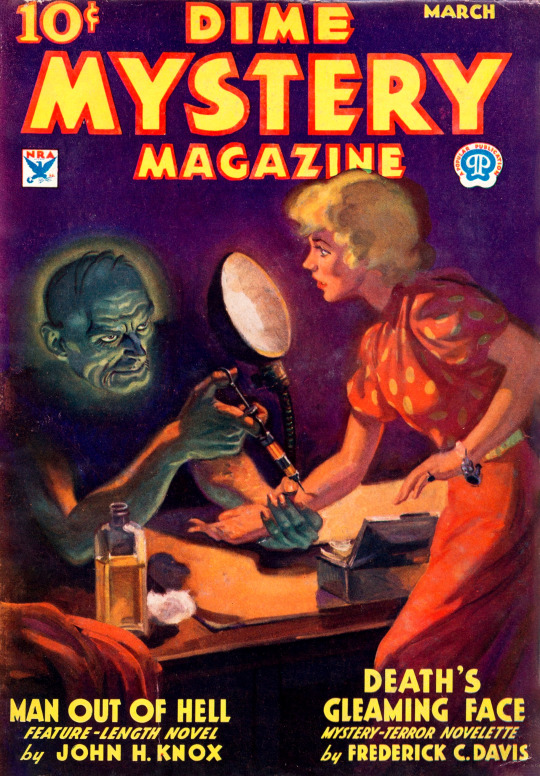
Dime Mystery Magazine, March 1934
38 notes
·
View notes
Text
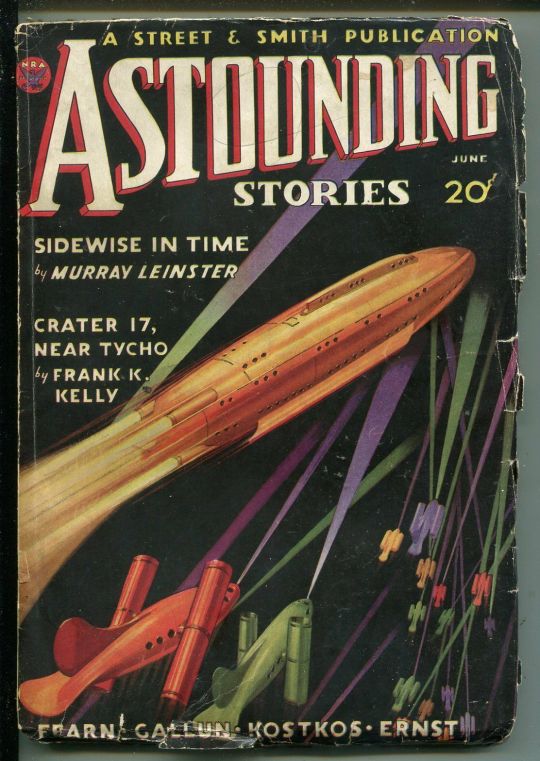
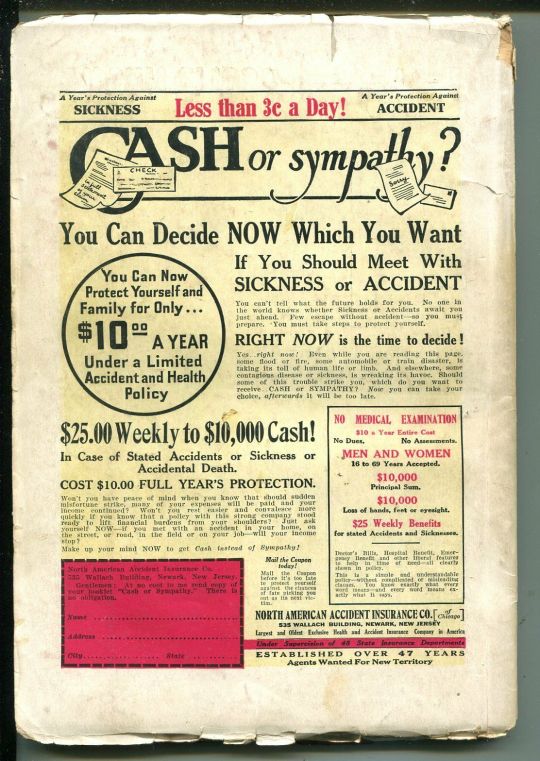
Vintage Pulp - Astonishing Stories (June1934)
#Pulp#Magazines#Astounding Stories#Science Fiction#Rockets#Art Deco#Vintage#Art#Illustration#Design#Ads#Advertising#1934#1930s#30s#Pulp Art#Pulp Illustration#Murray Leinster
25 notes
·
View notes
Photo
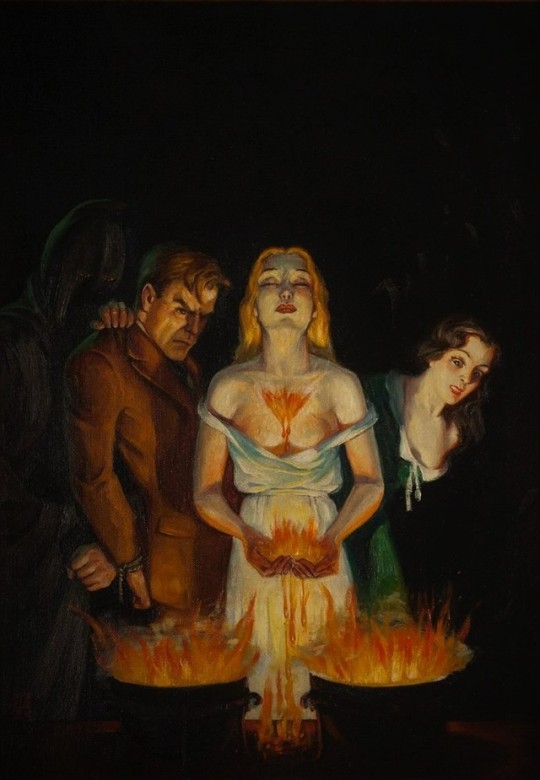
Blaze of Glory - art by Rafael DeSoto (1934)
#rafael desoto#blaze of glory#pulp art#black book detective magazine#cover art#pulp artist#1930s#1934
55 notes
·
View notes
